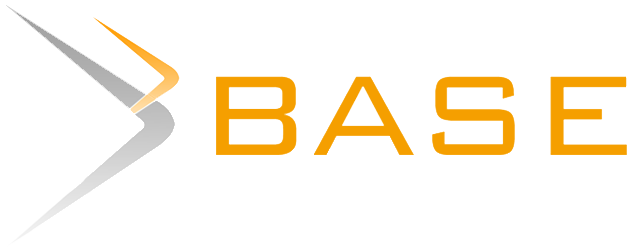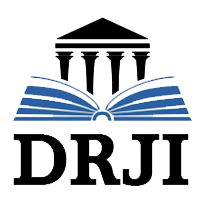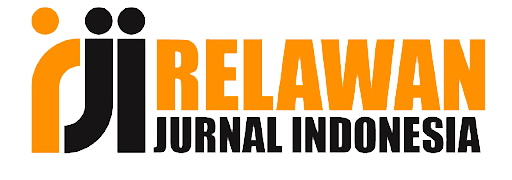The Comparison Test BCBT an Reduction on SDS and BCS
Abstract
The provision of drug treatment within overcrowded prisons presents significant challenges. This study investigated the effectiveness of Brief Cognitive Behavioral Therapy (BCBT) in reducing methamphetamine dependence severity and craving intensity among incarcerated individuals. A quantitative experimental design compared an intervention group to a control group. Following the screening of 551 prisoners, 170 participants meeting inclusion criteria were randomly assigned to either the BCBT (n=85) or control (n=85) condition. The BCBT group received four individual therapy sessions with two follow-ups over six months. The control group received standard psychoeducational leaflets. The Severity Dependent Scale and a brief craving scale were administered pre- and post-intervention to assess changes in methamphetamine dependence and craving levels. Results indicated a statistically significant decrease in craving within the BCBT group, whereas craving tended to increase in the control group. These findings align with the understanding that recovery is multifaceted, influenced by addiction severity, recovery engagement, and social support, including self-awareness. In conclusion, BCBT demonstrates efficacy in reducing methamphetamine dependence and craving among incarcerated people who use drugs.
Keywords
Full Text:
PDFReferences
Alam, M. M., Sarker, M. R., Hossain, M. A., & Islam, M. S. (2022). Ethical challenges in conducting substance abuse research among incarcerated populations: A qualitative exploration. International Journal of Prisoner Health, 18(1), 101-115.
Alammehrjerdi, Z., Ezard, N., Clare, P., Shakeri, A., Babhadiashar, N., Mokri, A., & Dolan, K. (2016). Brief Cognitive-Behavioural Therapy for Methamphetamine Use among Methadone-Maintained Women: A Multicentre Randomised Controlled Trial. Journal of Addiction Research & Therapy, 7(4), 294–301. https://www.google.com/search?q=https://doi.org/10.4172/2155-6105.1000294
Bachtiar, V., Kelly, M. D., Wilman, H. R., Jacobs, J., Newbould, R., Kelly, C. J., Gyngell, M. L., Groves, K. E., McKay, A., Herlihy, A. H., Fernandes, C. C., Halberstadt, M., Maguire, M., Jayaratne, N., Linden, S., Neubauer, S., & Banerjee, R. (2019). Repeatability and reproducibility of multiparametric magnetic resonance imaging of the liver. PLoS ONE, 14(4), e0214921. https://www.google.com/search?q=https://doi.org/10.1371/journal.pone.0214921
Badan Narkotika Nasional Republik Indonesia. (2020). Resolusi Pemasyarakatan Kemenkumham Tahun 2020: 21.540 Narapidana Pengguna Narkoba Direhabilitasi [Kemenkumham Correctional Resolution 2020: 21,540 Inmates Using Drugs Rehabilitated]. Badan Narkotika Nasional Republik Indonesia. Retrieved from https://bnn.go.id/resolusi-pemasyarakatan-kemenkumham-tahun-2020-21-540-narapidana/
Beck, A. T. (1963). Thinking and depression: I. Idiosyncratic content and cognitive distortions. Archives of General Psychiatry, 9(4), 324–333. https://doi.org/10.1001/archpsyc.1963.01720160014002
Jacobson, J., Heard, C., & Fair, H. (2017). PRISON: Evidence of its use and over-use from around the world. London: Institute for Criminal Policy Research. Retrieved from https://www.prisonstudies.org/sites/default/files/resources/downloads/global_imprisonment_web2c.pdf
Lee, N. K., Lee, S. M., Choi, J. S., & Oh, S. M. (2021). The effectiveness of cognitive behavioral therapy for substance use disorders: A meta-analysis of randomized controlled trials. Journal of Substance Abuse Treatment, 128, 108312.
Meredith, J., Sterling, S., Hanlon, J., & Shoptaw, S. (2023). Cognitive behavioral therapy for methamphetamine use disorder: A systematic review. Addictive Behaviors, 136, 107492.
Nevid, J. S., Rathus, S. A., & Greene, B. (2005). Abnormal psychology in a changing world (6th ed.). Pearson Prentice Hall.
Notoatmodjo, S. (2010). Metodologi penelitian kesehatan [Health research methodology]. Jakarta: Rineka Cipta.
Novian, R., Eddyono, S. W., Kamilah, A. G., Dirga, S., Nathania, C., Napitupulu, E. A. T., Wiryawan, S. M., & Budhiman, A. A. (2018). Strategies to Reduce Overcrowding in Indonesia: Causes, Impacts, and Solutions. Jakarta: Institute for Criminal Justice Reform (ICJR). Retrieved from http://icjr.or.id/wp-content/uploads/2019/03/Strategies-to-Reduce-Overcrowding-in-Indonesia.pdf
Rich, P., & Copans, S. (2000). The healing journey through addiction: Your journal for recovery and self renewal. New York: John Wiley & Sons.
Substance Abuse and Mental Health Services Administration (SAMHSA). (2013). Results from the 2012 National Survey on Drug Use and Health: Summary of National Findings. NSDUH Series H-46, HHS Publication No. (SMA) 13-4795. Rockville, MD: Substance Abuse and Mental Health Services Administration. Retrieved from https://www.samhsa.gov/data/sites/default/files/NSDUHresults2012/NSDUHresults2012.pdf
United Nations Office on Drugs and Crime (UNODC). (2013). Indonesia: Situation Assessment on Amphetamine-type stimulants. United Nations Office on Drugs and Crime.Retrievedfrom https://www.unodc.org/documents/indonesia/publication/2013/Indonesia_ATS_2013_low.pdf
Winarso, I., Atmosukarto, I. I., & Handoyo, P. (2016). Country Report on Drugs: Republic of Indonesia 1976-2016. Depok: Indonesia Cerdas NAPZA and Rumah Cemara, Intuisi, Inc.
Yuan, Y., Zhang, X., Wang, Y., Shen, C., Lu, L., & Liu, Y. (2020). Neuroimaging findings in methamphetamine use disorder: A systematic review and meta-analysis. Addiction Biology, 25(1), e12668.
DOI: https://doi.org/10.24176/perseptual.v10i1.14707
Refbacks
- There are currently no refbacks.

Jurnal Psikologi Perseptual (eISSN 2580-9520) is licensed under a Creative Commons Attribution-ShareAlike 4.0 International License














